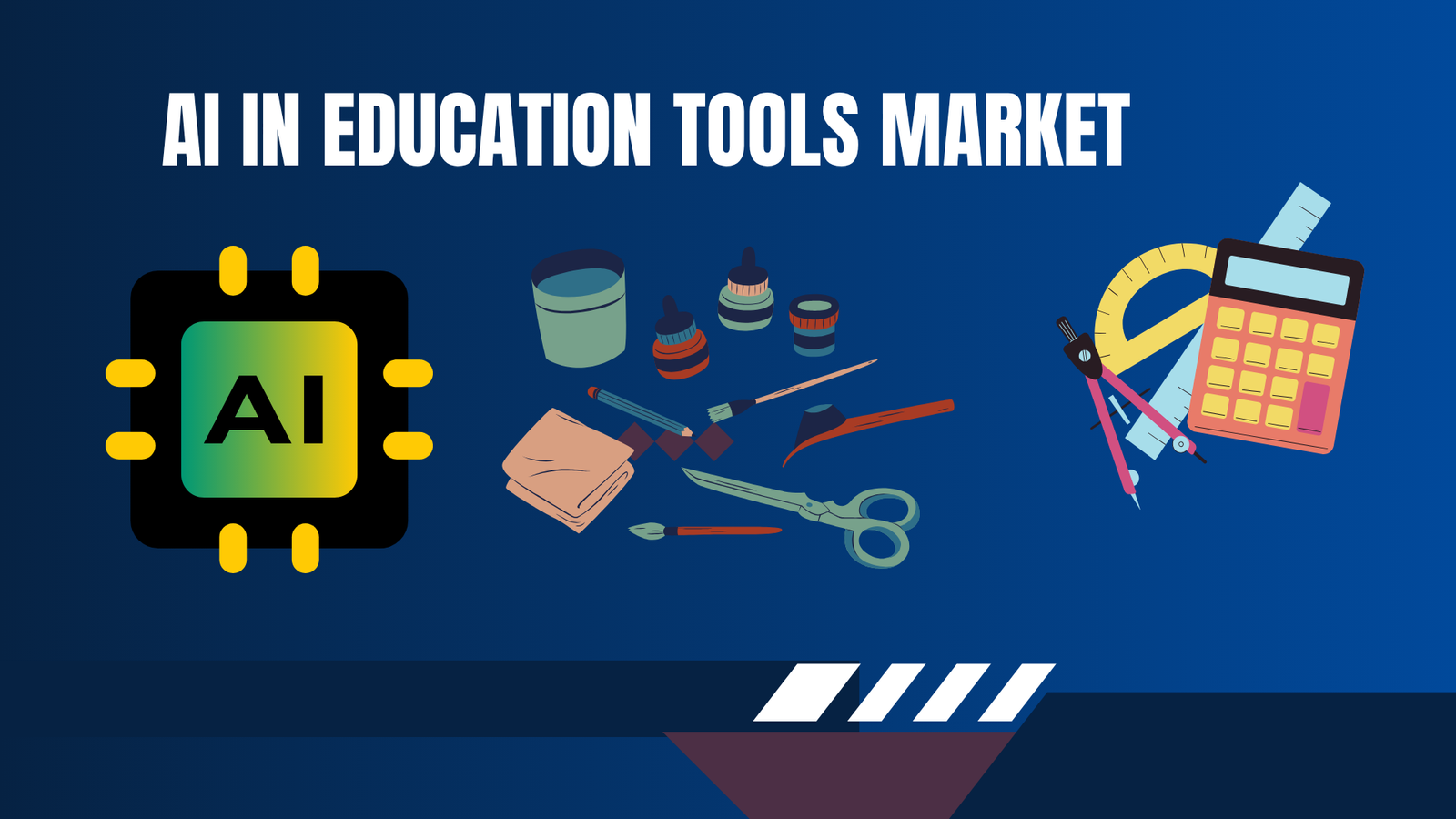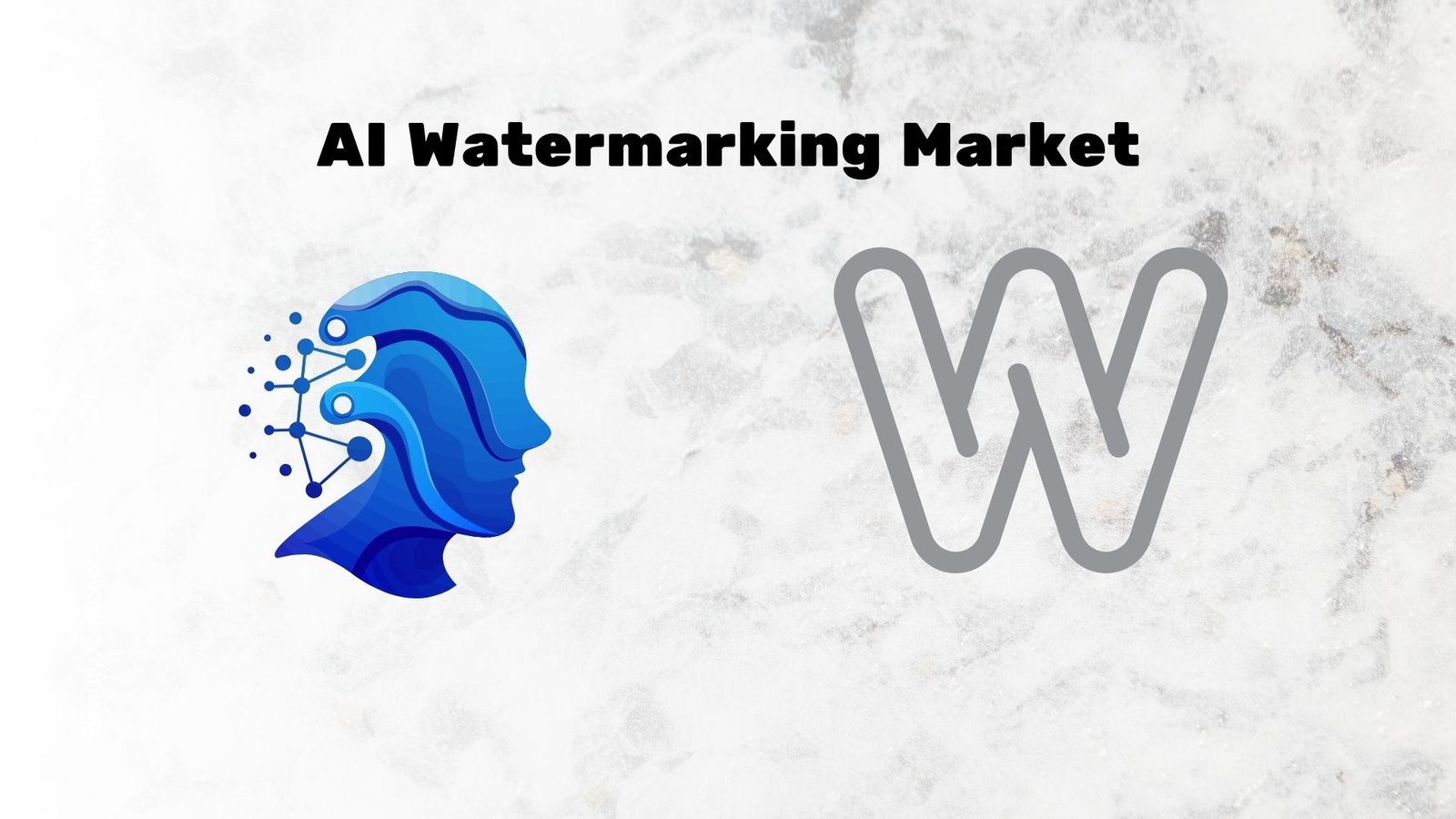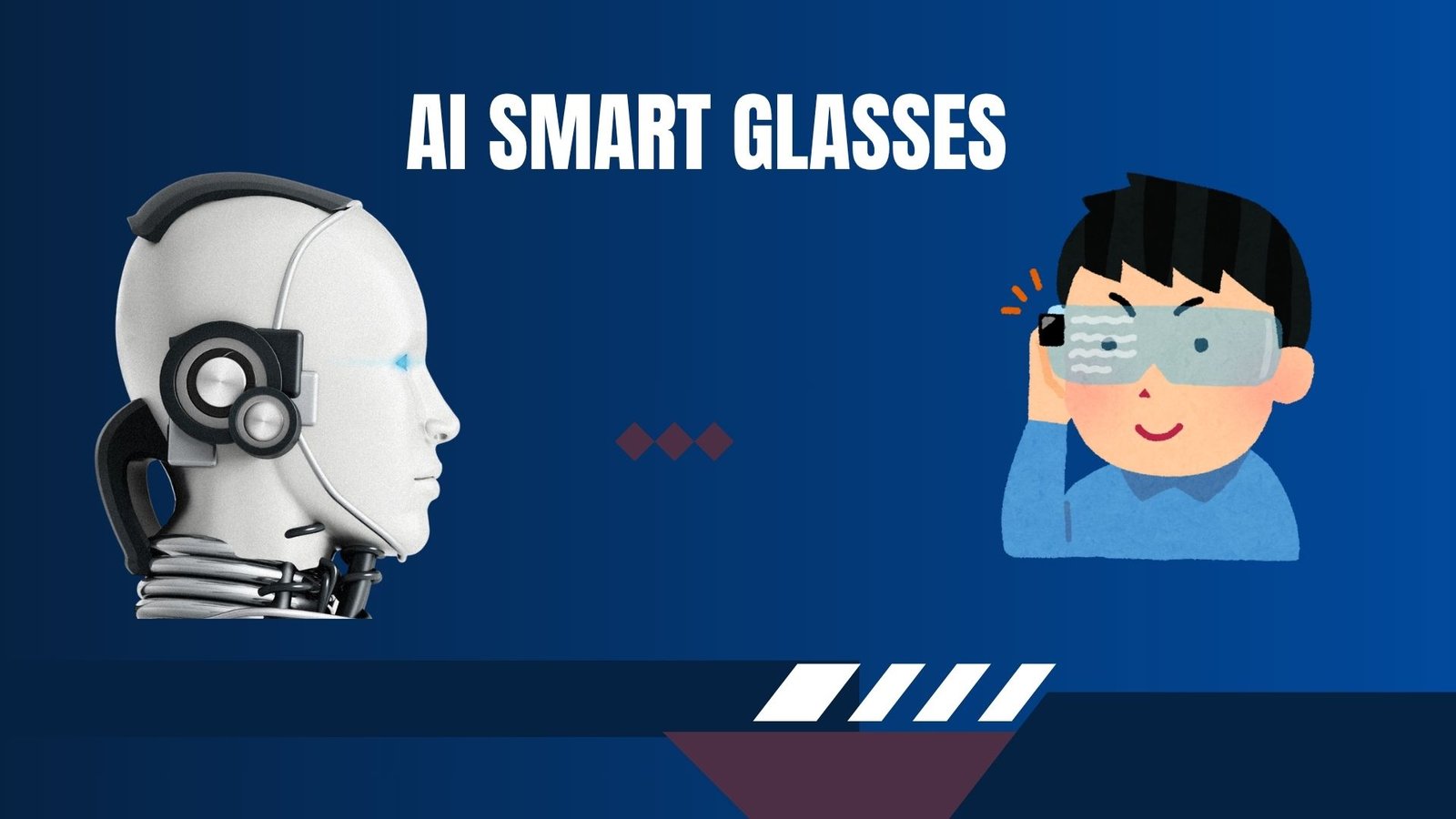AI Glasses Market worth USD 31.5 billion by 2034
Updated · Nov 18, 2025

WHAT WE HAVE ON THIS PAGE
According to Market.us, The Global AI Glasses Market is projected to reach USD 31.5 billion by 2034, up from USD 1.5 billion in 2024, growing at a CAGR of 35.6% from 2025 to 2034. In 2024, North America led the market, accounting for over 36.2% of the share, generating USD 0.54 billion in revenue.
The AI glasses market has expanded steadily as wearable technologies become more integrated with artificial intelligence for real time assistance, information display and hands free interaction. Growth reflects increasing demand for lightweight devices that combine augmented vision, voice assistance and on device processing. The market is moving from early consumer experimentation to more structured adoption in professional, industrial and lifestyle environments.
The growth of the market can be attributed to advancements in miniaturised sensors, improved optical systems and powerful edge AI processors that enable real time interpretation of surroundings. Rising interest in hands free productivity, immersive experiences and safety aware navigation strengthens demand. Wider consumer acceptance of wearables, driven by health devices and smart accessories, also contributes to the positive adoption trend.
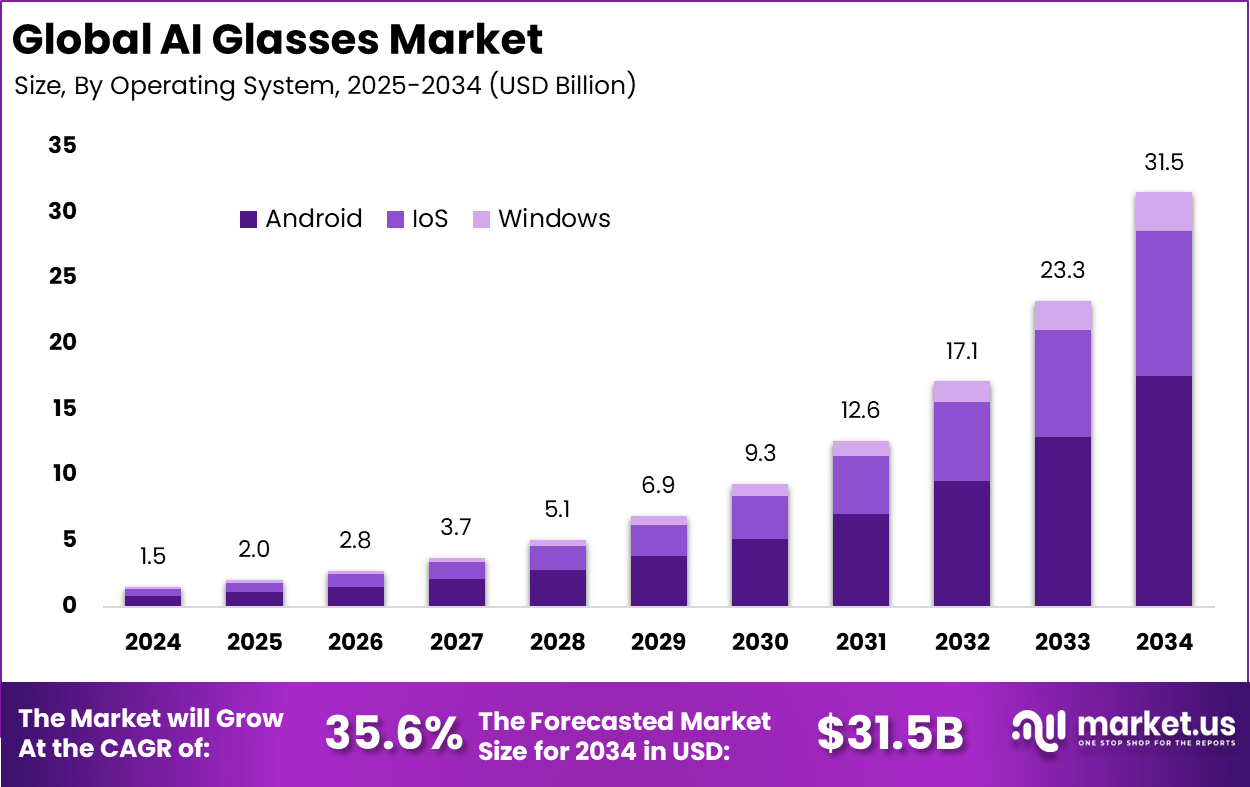
(Source: market.us)
Increasing technology adoption is fueled by integration of AI with augmented reality, advanced voice assistants, computer vision, and sensor fusion. The miniaturization of components allows embedding powerful processors and sensors into wearable frames. Enhanced connectivity via 5G and better battery life expand the practical use cases of AI glasses. The combination of these technologies supports seamless voice commands, gesture control, and contextual awareness for everyday applications.
Investment opportunities in the AI glasses market extend beyond hardware sales into software, data services, and ecosystem platforms. Subscription models for AI-powered translation, personalized content, and real-time data services create recurring revenue streams. Verticals such as industrial maintenance, healthcare navigation, education, and retail offer diversified business cases. Risks include technology maturity, social acceptance, privacy concerns, and timing market entry to avoid early failure or missed opportunities.
Key Takeaways
- The Android segment dominated the market with a 55.7% share, driven by its broad compatibility with smartphones and a strong developer ecosystem supporting various applications in smart eyewear.
- Wi-Fi connectivity accounted for 40.7%, reflecting the growing demand for seamless and real-time data synchronization in wearable technologies.
- Polymer Dispersed Liquid Crystals (PDLC) led display technologies with 45.7% of the market, valued for their superior transparency, low power consumption, and ability to adjust to varying lighting conditions.
- The Gaming and Entertainment sector captured 32.5%, supported by increasing demand for immersive and augmented reality experiences in consumer applications.
- The U.S. market was valued at USD 0.46 billion in 2024, with an expected 33.2% CAGR, reflecting early adoption and innovation in consumer tech.
- North America held 36.2% of the global market share, benefiting from advanced infrastructure, strong AR/VR investment, and the growing integration of AI in wearable technologies.
Adoption Rate and Shipment Growth
- Global shipments of smart glasses saw a 110% YoY increase in the first half of 2025, indicating accelerating consumer acceptance and adoption of smart eyewear.
- AI-powered smart glasses represented 78% of total shipments in early 2025, up from 46% in the same period of 2024, signaling a shift toward AI-enhanced wearables.
- The AI smart glasses segment grew by more than 250% YoY in early 2025, significantly outpacing the overall growth of the smart glasses market.
- Global unit sales of smart glasses reached 1.52 million units in 2024, with projections to exceed 10 million units by 2026, reflecting strong multi-year demand.
- Ray-Ban Meta AI Glasses were a major driver, selling over 500,000 units within the first six months of 2025, underscoring the growing consumer appetite for AI-integrated eyewear with enhanced communication and media features.
Usage Statistics
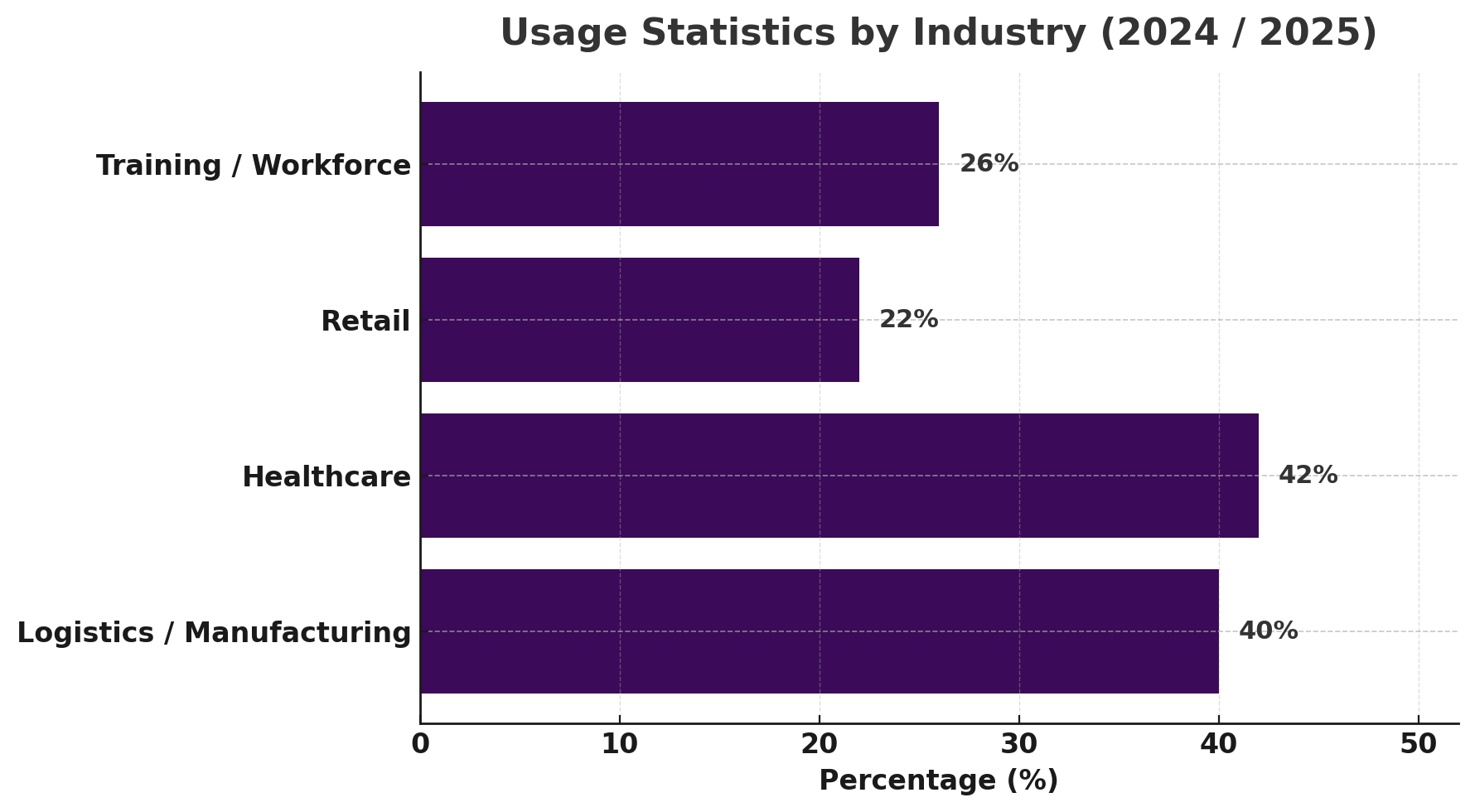
(Source: market.us)
Driver
Integration of AI and 5G Technology
The integration of artificial intelligence with 5G technology is driving growth in the AI glasses market. AI powers smart features such as real-time object recognition, voice assistance, and facial recognition, enhancing user experience. Meanwhile, 5G enables fast, low-latency data transfer, making wearable AI glasses responsive and practical for everyday use. This combination allows professionals in healthcare, education, and manufacturing to benefit from hands-free, real-time data access and remote collaboration. The ability to perform complex AI tasks without delay makes these glasses more useful, encouraging more users to adopt the technology.
Restraint
High Production Costs
One major barrier to widespread adoption of AI glasses is their high production cost. The technology involves expensive components such as AI chips, sensors, cameras, and 5G modules, all miniaturized into a lightweight frame. This complexity keeps the price of AI glasses relatively high. Because of these costs, many consumers find it hard to afford AI glasses, limiting the market mostly to early adopters and enterprise users. Until prices come down, mass-market acceptance will remain a challenge, especially in price-sensitive regions.
Opportunity
Expansion in Industrial and Healthcare Use
AI glasses present significant opportunities in industries like healthcare, manufacturing, and retail. They help professionals by providing hands-free access to instructions, remote expert guidance, and real-time data visualization. Such practical applications improve efficiency and safety on the job. As companies invest in digital transformation and wearable technology, demand for AI glasses is growing rapidly for industrial training, quality control, and remote consultation. This expands potential market size beyond consumer entertainment to essential workplace tools.
Challenge
User Interface and Regulation
A key challenge is designing AI glasses that balance advanced features with ease of use. Complex controls such as voice commands or gestures can frustrate users, reducing satisfaction. This affects adoption, especially among those not comfortable with new tech interfaces. Additionally, the lack of clear regulations on AI glasses usage and data privacy slows broader deployment. Uncertainty in rules and trust concerns hinder some sectors, requiring stronger standards and more user-friendly designs to overcome these barriers.
Key Market Segments
By Operating System
- Android
- IoS
- Windows
By Connectivity
- WI-FI
- Bluetooth
- Others
By Tinting Technology
- Polymer Dispersed Liquid Crystals
- Electro-chromic
- Photochromic
- Others
By Application
- Gaming & Entertainment
- Remote Inspection
- Telemedicine
- Product design & Development
- Others
Read More – https://market.us/report/ai-glasses-market/

Barry loves technology and enjoys researching different tech topics in detail. He collects important statistics and facts to help others. Barry is especially interested in understanding software and writing content that shows its benefits. In his free time, he likes to try out new healthy recipes, practice yoga, meditate, or take nature walks with his child.




